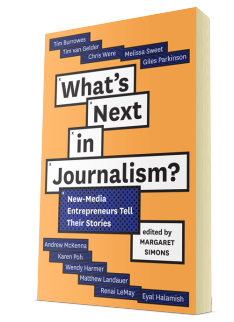A daily circus act
 When broadcaster and former journalist Wendy Harmer launched The Hoopla, she dipped into her nest egg to cater for an audience that had largely been ignored. In this extract from What’s Next in Journalism? she shares her plan.
When broadcaster and former journalist Wendy Harmer launched The Hoopla, she dipped into her nest egg to cater for an audience that had largely been ignored. In this extract from What’s Next in Journalism? she shares her plan.
Looking back, I needed The Hoopla like a hole in the head. In early 2011, with a tidy book deal in hand, a children’s musical to write, the odd bit of radio presenting to do, and enough speaking engagements to keep me busy, all was well in my world. I consumed two or three books a week. I actually read my local rag, the Manly Daily, and wrote letters to the editor.
My media consumption was moderate. I liked to listen to Radio National, and my online activity was limited to a daily whizz around the major news sites. No Twitter — had hardly heard of it. My engagement with Facebook was desultory. My attempt at my own website, half-hearted.
Then, somehow, I fell head-first into the 24-hour news cycle and the social-media revolution, and someone pressed the button marked ‘fast spin’. My motherhood statement for The Hoopla’s first issue on 4 July 2011 was simple and modest enough: “I believe that the views and concerns of mature Australian women are increasingly overlooked in a landscape of celebrity, youth and sensation. In what many have termed ‘a race to the bottom’, where can we see ourselves?”


This is why this new ago of media is so exciting. Diverse, interesting voices, rather than the same old commercial, plastic banter.
Bring it on I say.
I’ve loved the Hoopla from day one.
Full marks to Wendy and Jane for taking the risk. They’ve proven you can be your own media outlet.
Love the Hoopla!
Intelligent, informative and just plain lovely….
Is it just me or is anyone else thinking Wendy and Jane are brilliant! Thanks for giving the silent, invisible middle aged women a go. We need marketing big time.
i agree – this is a spot on demographic to chase. Not every woman wants to endlessly debate clothes, makeup, diet and shopping.
It’s a fantastic resource to see what else is going on in the world – with politics, family, or just have a laugh. The contributors are unique, vocal and independent.
I’m a big fan.